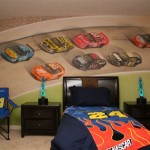Science-Themed Cake Decorations: A Guide to Educational and Edible Creations
Science-themed cake decorations offer a unique and engaging way to celebrate birthdays, graduations, science fairs, and other special occasions. These decorations can transform a simple cake into an educational and visually appealing centerpiece, sparking curiosity and fostering an appreciation for science. The possibilities are virtually limitless, spanning various scientific disciplines, from astronomy and biology to chemistry and physics. The key to successful science-themed cake decoration lies in understanding the fundamental principles of each scientific concept and translating them into edible art using various decorating techniques and materials.
The foundation of a science-themed cake lies in the cake itself. Choosing a flavor that complements the chosen theme is important. For example, a "galaxy" cake might benefit from a dark chocolate or black velvet base to simulate the night sky. Then, the decoration process begins, which involves selecting appropriate colors, textures, and shapes to represent scientific elements accurately and creatively. Food coloring, fondant, modeling chocolate, edible glitter, and piping gel become crucial tools in the decorator's arsenal.
Beyond aesthetics, effective science-themed cake decorations should subtly educate. Incorporating scientifically accurate details, even in simplified forms, can provide an opportunity for learning and discussion. A cake about the solar system, for instance, can showcase the relative sizes and colors of the planets, while a biology-themed cake could feature a simplified DNA double helix structure. The level of detail should be adjusted to suit the age and understanding of the audience.
Representing the Solar System and Cosmic Phenomena
The vastness and beauty of space provide ample inspiration for cake decorations. Creating a solar system cake, for example, is a popular choice. This involves sculpting or printing planets from fondant or modeling chocolate, carefully coloring them to match their real-life counterparts. The planets can then be arranged around a central "sun" made from a larger cake or a sphere of brightly colored fondant. Edible glitter or airbrushing can be used to create a shimmering, starry background.
Beyond the solar system, nebulae, galaxies, and constellations can also be depicted. These often involve more abstract techniques, such as swirling different colors of buttercream frosting or using edible airbrushing to create a gradient effect. Piping gel can be used to create the illusion of glowing stars or swirling gas clouds. A popular technique involves using a "galaxy drip," where colored ganache is poured over the edge of the cake, creating a cascading effect reminiscent of cosmic dust. Individual stars and planets, made in advance, can then be carefully placed onto the drip before it sets. Sugar crystals or edible glitter can accentuate the cosmic beauty.
Another option is to represent astronomical instruments, such as telescopes or satellites. These can be sculpted from fondant or modeling chocolate and placed on top of the cake. Details, such as lenses, panels, and antennae, can be added using edible markers or small pieces of fondant. These details not only enhance the visual appeal but also introduce elements of engineering and technology.
Bringing Biology to Life with Edible Representations
The world of biology offers a wealth of inspiration, from microscopic cells to complex ecosystems. One common theme is the DNA double helix, which can be created using fondant or modeling chocolate. The structure can be built around a central support to maintain its shape, and colorful candies or edible pearls can be used to represent the nucleotide bases. Each color can correspond to a specific base (Adenine, Thymine, Guanine, Cytosine) for added educational value.
Cell structures can be represented using different types of candies and frosting. The cell membrane can be created using a thin layer of frosting, while the organelles can be represented by differently shaped and colored candies. For example, gummy candies could represent mitochondria, while small sprinkles could represent ribosomes. This approach allows for a simplified but visually engaging representation of cellular biology.
Animals and plants can also be depicted, either realistically or in a more stylized manner. Fondant or modeling chocolate can be used to create animal figures, while edible flowers and leaves can be used to represent plants. An ecosystem cake, for example, could feature a variety of edible animals and plants arranged to depict a specific habitat. Care should be taken to ensure accurate representation where possible, such as including appropriate characteristics for the featured species. One example is a cake demonstrating the life cycle of a butterfly, complete with a caterpillar, chrysalis, and butterfly fashioned from fondant.
Celebrating Chemistry with Edible Reactions and Elements
Chemistry provides numerous visual opportunities for cake decoration. One popular theme is the periodic table of elements. Each element can be represented by a square of fondant, colored and labeled with its symbol and atomic number. These squares can be arranged in the traditional periodic table format on top of the cake.
Chemical reactions can be simulated using various decorating techniques. For example, a "volcano" cake can be created by shaping the cake into a cone and using dry ice to simulate the eruption. The dry ice sublimates, producing a cloud of vapor that resembles smoke. This demonstrates a physical change in a visually engaging way. Furthermore, the volcanic rock can be represented by dark chocolate shavings or crushed Oreo cookies.
Laboratory equipment, such as beakers, test tubes, and flasks, can be sculpted from fondant or modeling chocolate. These can be filled with colored piping gel or edible liquids to simulate chemical solutions. Food coloring can be added to the piping gel to achieve a variety of colors, representing different chemicals. This approach allows for a playful and educational representation of chemistry concepts. Sugar crystals can be used to represent chemical compounds such as salts. The crystals, when sprinkled on the cake, can enhance the representation of the chemical composition.
The decorations can be further enhanced by adding edible glitter to simulate the sparkling nature of some chemical reactions, or by using edible paint to add details to the laboratory equipment models. The choice of colors is also crucial in representing chemistry, as different colors can be used to indicate specific chemical properties or elements.
Safety is paramount when incorporating any non-edible elements into cake decorations. Dowels, skewers, or wires used to support fondant structures should be food-safe and securely placed. If dry ice is used for a volcanic eruption effect, it should be handled with care and kept away from children. All edible decorations should be made from high-quality ingredients and stored properly to prevent spoilage.
Furthermore, it’s important to consider the audience when planning science-themed cake decorations. For young children, simpler designs with bright colors and recognizable shapes are more effective. For older children and adults, more complex and detailed designs can be used to showcase a deeper understanding of scientific concepts. The level of detail should be tailored to the audience's age and knowledge level to ensure that the cake is both visually appealing and educational.
Ultimately, science-themed cake decorations are a creative and educational way to celebrate science and spark curiosity. By understanding the fundamental principles of science and using various decorating techniques, anyone can transform a simple cake into a visually stunning and educational masterpiece. The possibilities are endless, and the results are sure to impress and inspire.

Mad Science Birthday Cake Topper Scientist Party Editable Printable Sweden

Science Experiment Party Cake Topper Sweden

Science Cake Topper Party

Science Layer Cake Classy Girl Cupcakes

Chemistry Science Fondant Iced Birthday Cake

Sunday Sweets Is Blinding Me With Science Cake Wrecks

Chemistry Molecule Science Beaker Planet And A Test Tube Edible Cake T Birthday Place

1000 Ideas About Science Cake On Chemistry Birthday Scientist Party

Science Happy Birthday Cake Topper Glitter Congrats Mad Chemistry Theme Party Decorations Temu Belgium

Science Party Goodies Vanilla Frost Cakes







